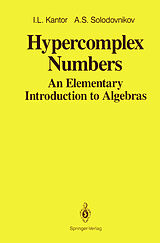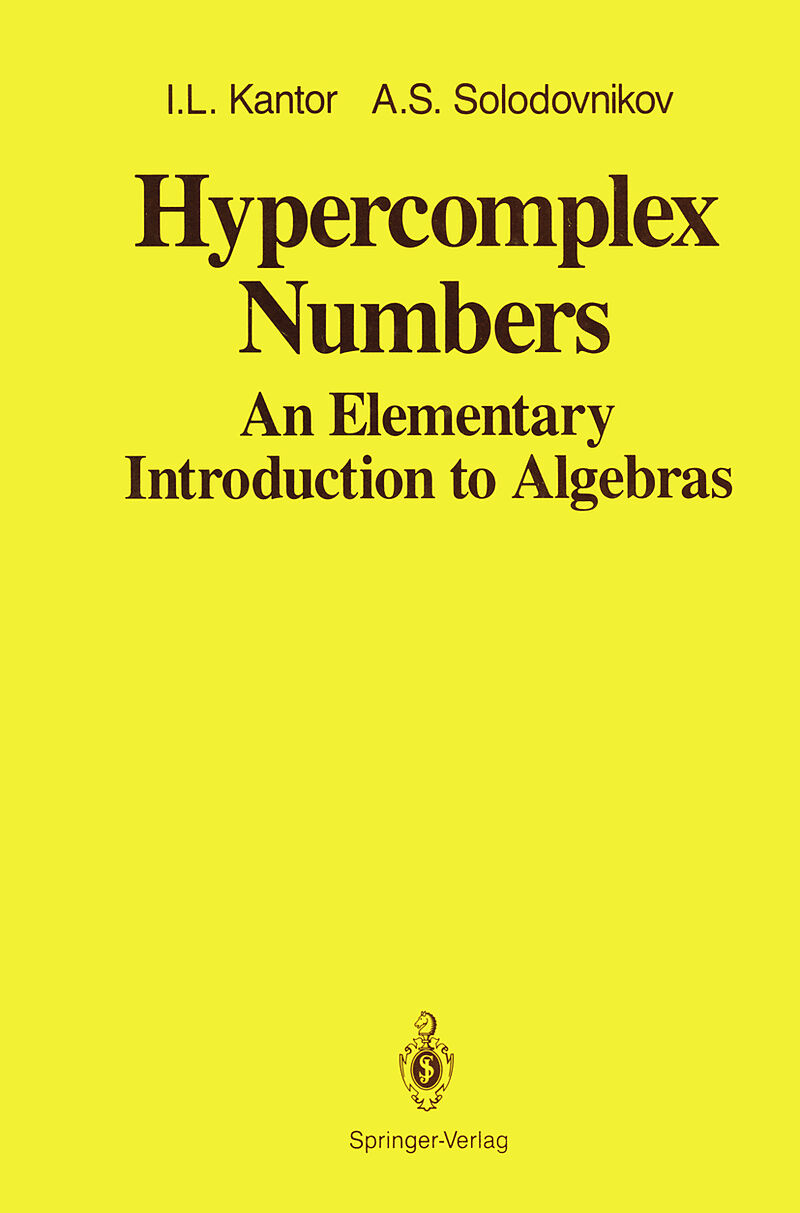Hypercomplex Numbers
Einband:
Kartonierter Einband
EAN:
9781461281917
Untertitel:
An Elementary Introduction to Algebras
Autor:
I. L. Kantor, A. S. Solodovnikov
Herausgeber:
Springer New York
Auflage:
Softcover reprint of the original 1st edition 1989
Anzahl Seiten:
184
Erscheinungsdatum:
21.09.2011
ISBN:
1461281911
This book deals with various systems of "numbers" that can be constructed by adding "imaginary units" to the real numbers. The complex numbers are a classical example of such a system. One of the most important properties of the complex numbers is given by the identity (1) Izz'l = Izl·Iz'I· It says, roughly, that the absolute value of a product is equal to the product of the absolute values of the factors. If we put z = al + a2i, z' = b+ bi, 1 2 then we can rewrite (1) as The last identity states that "the product of a sum of two squares by a sum of two squares is a sum of two squares. " It is natural to ask if there are similar identities with more than two squares, and how all of them can be described. Already Euler had given an example of an identity with four squares. Later an identity with eight squares was found. But a complete solution of the problem was obtained only at the end of the 19th century. It is substantially true that every identity with n squares is linked to formula(1), except that z and z' no longer denote complex numbers but more general "numbers" where i,j, . . . , I are imaginary units. One of the main themes of this book is the establishing of the connection between identities with n squares and formula (1).
Inhalt
I Hypercomplex Numbers.- 1 Complex Numbers.- 2 Alternate Arithmetics on the Numbers a + bi.- 3 Quaternions.- 4 Quaternions and Vector Algebra.- 5 Hypercomplex Numbers.- 6 The Doubling Procedure. Cayley Numbers.- 7 Algebras.- II N-Dimensional Vectors.- 8 The N-Dimensional Vector Space An.- 9 A Basis of The Space An.- 10 Subspaces.- 11 Lemma on Homogeneous Systems of Equations.- 12 Scalar Products.- 13 Orthonormal Basis. Orthogonal Transformation.- III The Exceptional Position of Four Algebras.- 14 Isomorphic Algebras.- 15 Subalgebras.- 16 Translation of the Problem of the Sum of Squares into the Language of Algebras. Normed Algebras.- 17 Normed Algebras with an Identity. Hurwitz's Theorem.- 18 A Method for Constructing All Normed Algebras and Its Implications for the Problem of the Sum of Squares.- 19 Frobenius' Theorem.- 20 Commutative Division Algebras.- 21 Conclusion.- 22 Notes.

Leider konnten wir für diesen Artikel keine Preise ermitteln ...
billigbuch.ch sucht jetzt für Sie die besten Angebote ...
Die aktuellen Verkaufspreise von 6 Onlineshops werden in Realtime abgefragt.
Sie können das gewünschte Produkt anschliessend direkt beim Anbieter Ihrer Wahl bestellen.
Loading...
Die aktuellen Verkaufspreise von 6 Onlineshops werden in Realtime abgefragt.
Sie können das gewünschte Produkt anschliessend direkt beim Anbieter Ihrer Wahl bestellen.
| # | Onlineshop | Preis CHF | Versand CHF | Total CHF | ||
|---|---|---|---|---|---|---|
| 1 | Seller | 0.00 | 0.00 | 0.00 |
